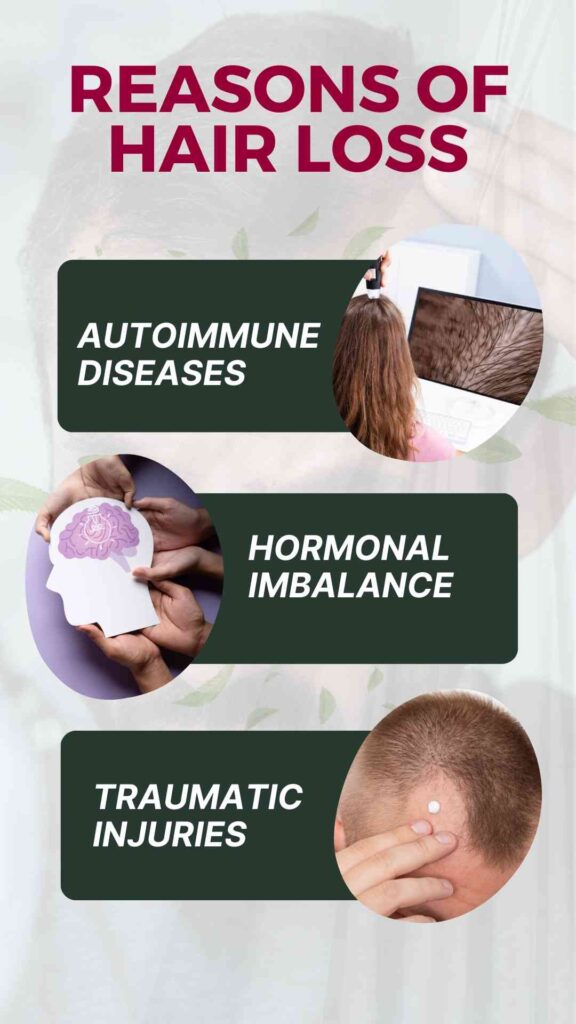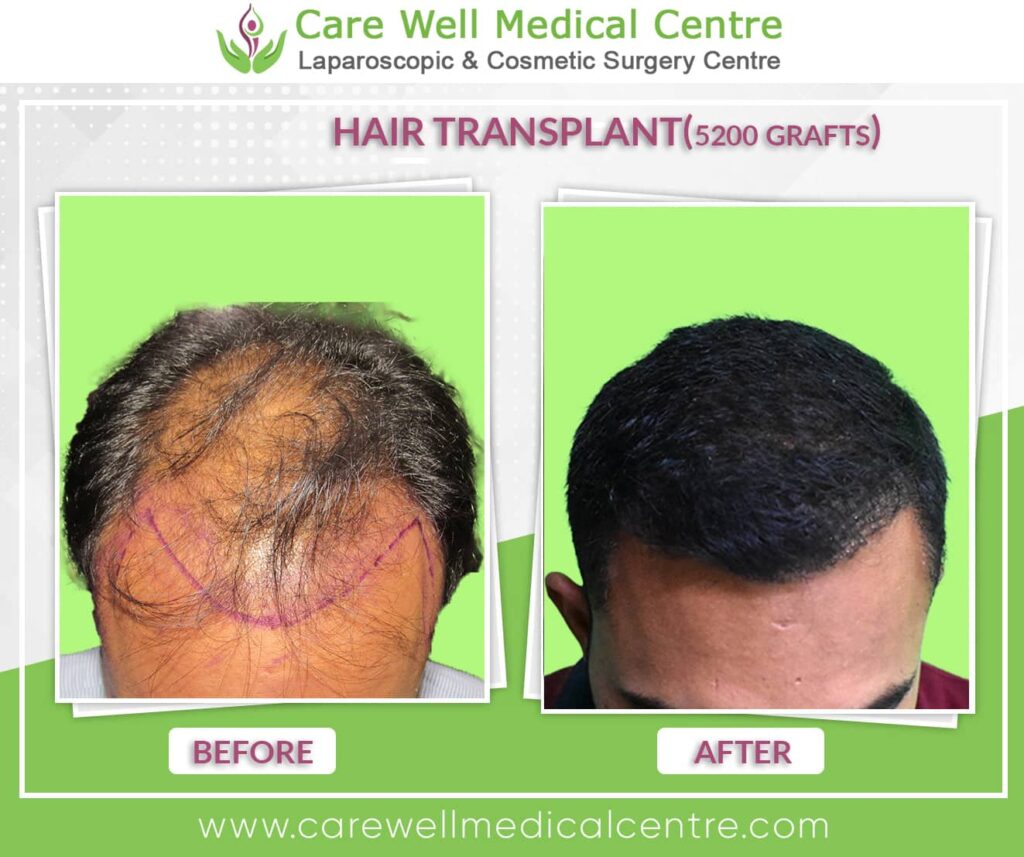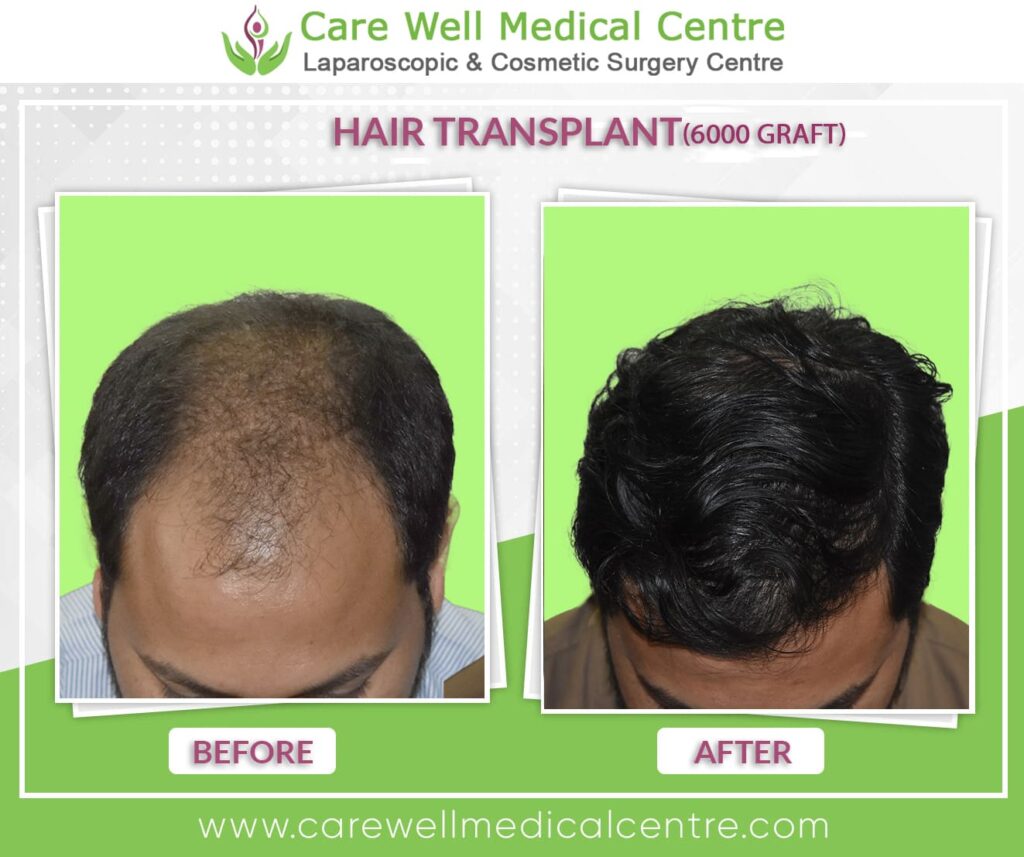Hair Transplants for Androgenic Alopecia: A Complete Guide
Table of Contents
Introduction:
Are you also suffering from androgenic alopecia and alopecia areata hair loss? You have come to know by some means that Hair Transplants for Androgenic Alopecia are the only solution to this problem. Then you have reached the right place. In this article, we will answer all the questions that are going through your mind today. So, stay with us until we reach the end to get all the answers you seek. In this section, let’s delve into the topic of hair transplants for androgenic alopecia, providing you with valuable insights into this potential solution.
Hair loss can be painful. But there is hope for those experiencing permanent hair loss. Alopecia areata and androgenetic alopecia areata are two disorders. Hair transplantation has shown promising performance in these disorders. This article discusses androgenetic alopecia hair transplants in India. Men’s and women’s hair restoration procedures’ benefits, drawbacks and before-and-after results will be examined. Also, we will address common concerns associated with the procedure, such as pain. And find out the success rate of hair transplants for Alopecia Areata.
Understanding Hair Loss and Transplant Surgery:
There can be many reasons for hair loss. Some of the main ones are:
- Autoimmune diseases,
- Hormonal imbalance
- Traumatic injuries
All these factors can be the cause of hair loss. Apart from this, there are two more common conditions that cause permanent hair loss. They are alopecia areata and androgenic alopecia. Alopecia areata is an autoimmune disorder that targets hair follicles. Androgenic alopecia is a condition often referred to as pattern baldness. This is the main reason behind hair thinning and baldness.

Discover the secrets behind lifelong hair transplants in our guide. Read More
Do Hair Transplants Work for Androgenic Alopecia in India?
Everyone from India to the rest of the world is talking about hair transplants for androgenic alopecia. People who want to stop pattern baldness often ask if hair transplants are a good option. The good news is that hair transplant for alopecia areata have shown positive results. But it’s essential to consider individual variations in response to the procedure. According to some research, the success rate for Androgenic Alopecia is between 75 and 80%. Many patients with hair loss have benefited from hair transplants.
Hair Transplant for Female Androgenetic Alopecia:
Hair loss usually occurs in men. But nowadays, women can also experience androgenic alopecia (Female Pattern Hair Loss). Effective solutions are required to address the distress that hair thinning causes women. Hair transplant treatment offer hope for women dealing with androgenetic alopecia. The procedure can provide them with thicker, fuller hair and boost their self-confidence.
Alopecia Hair Transplant Cost:
One of the concerns individuals often have is the cost of hair transplants. The cost of a hair restoration procedure also depends on the extent of hair loss. This may vary depending on the clinic’s location and the surgeon’s experience. But the cost can be a consideration. You might also want to think about the possible benefits and long-term effects of the process. Hair transplant costs in a city like Delhi can range from Rs. 1 lakh to Rs. 2 lahks. You should research and chat with reputable clinics to receive an accurate quotation.
Hair Transplant Before and After Photos:


The transformative effects of hair transplants are best illustrated through before-and-after comparisons. Individuals who have had a successful hair transplant often experience a marked improvement in their appearance. Natural-looking hair replaces thinning patches, enhancing their look and confidence.
Explore the visual journey of hair transplant before after photos, showcasing successful procedures that bring about remarkable hair regrowth. Witness amazing changes and renewed confidence in these captivating pictures.
Unlock Gorgeous Hair: Dive into the article now → Learn More.
Does a hair transplant hurt?
A common concern about hair transplants is pain. Hair transplants are now painless thanks to medical improvements. Local anesthesia is used to numb the area during the procedure, minimizing discomfort. You can usually manage post-procedure discomfort, which is transient.
Success Rates of Hair Transplants for Alopecia Areata:
For those struggling with alopecia areata, the success rate of hair transplants is a ray of hope. But different responses may have different success rates. Hair transplants have been performed how demonstrated a significant success rate in cases of alopecia areata. A hair transplant’s suitability depends on the situation and a trained specialist.
Conclusion:
In conclusion, Androgenic alopecia and other hair loss diseases can be difficult. But hair transplants give us hope. With a focus on effectiveness, ease of use, and all-around results, hair transplants can bring back both confidence and looks. Making informed hair transplant decisions requires consultation with medical professionals and trustworthy facilities.
FAQs
What is androgenic alopecia?
Androgenic alopecia, commonly known as male or female pattern baldness, is a genetic condition causing hair loss due to hormonal factors.
How does a hair transplant work?
A hair transplant involves relocating hair follicles from donor areas (typically the back of the head) to balding areas to promote regrowth.
Who is a suitable candidate for a hair transplant?
Candidates with stable hair loss and sufficient donor hair are suitable. A consultation with a dermatologist is necessary for a proper evaluation.
Are there different types of hair transplant techniques?
Yes, techniques include the Follicular Unit Transplantation (FUT) strip method and Follicular Unit Extraction (FUE), where individual follicles are extracted.
How long does a hair transplant procedure take?
Yes, techniques include the Follicular Unit Transplantation (FUT) strip method and Follicular Unit Extraction (FUE), where individual follicles are extracted.
Is a hair transplant a permanent solution?
Yes, transplanted hair is generally permanent, as it is resistant to the hormones causing androgenic alopecia.
What is the recovery period like?
Recovery usually takes a few days to a week, with scabs falling off in about 10 days. Complete results may take several months.
Are there any risks or side effects?
Risks include infection, scarring, and potential shock loss (temporary shedding). When a skilled professional performs the procedure, side effects are uncommon.
How soon can I expect to see results?
New hair growth typically starts within a few months, with noticeable improvements visible after 6–12 months.
Can women undergo hair transplants for androgenic alopecia?
Yes, women with suitable donor hair can undergo hair transplants, but the causes of female pattern hair loss should be thoroughly evaluated.
Is hair transplant effective for androgenetic alopecia?
Yes, hair transplants have shown effectiveness in treating androgenetic alopecia, commonly known as male or female pattern baldness. They involve moving hair follicles from areas with dense growth to thinning or balding areas, creating a natural-looking hairline.
Can I do a hair transplant if I have alopecia?
Hair transplants can be considered for various types of alopecia, including androgenetic alopecia. However, the suitability of the procedure depends on factors like the extent of hair loss, overall health, and consultation with a trained specialist.
Can androgenic alopecia regrow hair?
Hair transplants can help regrow hair in areas affected by androgenic alopecia. The transplanted hair follicles are resistant to the effects of the hormone responsible for hair loss, allowing for regrowth and a fuller appearance.
Can androgenic alopecia be cured permanently?
While there is no absolute cure for androgenic alopecia, hair transplants provide a long-lasting solution. The transplanted hair follicles retain their natural growth characteristics, offering a semi-permanent to permanent improvement in hair density and appearance.











